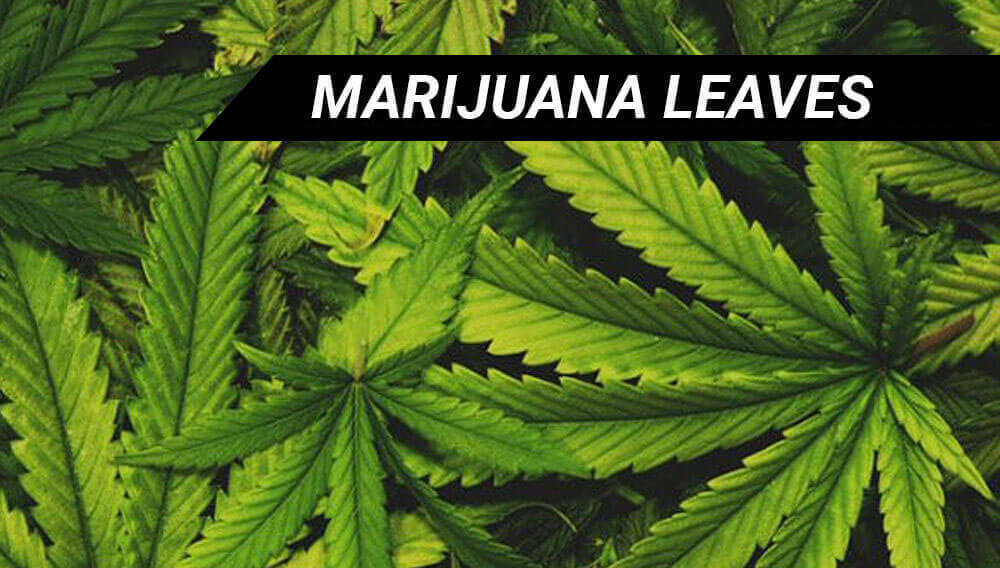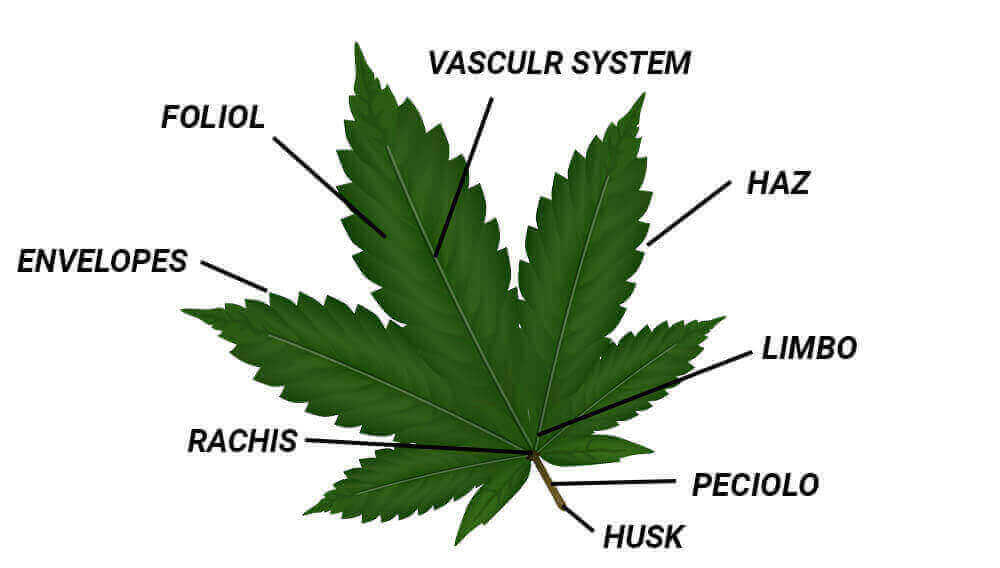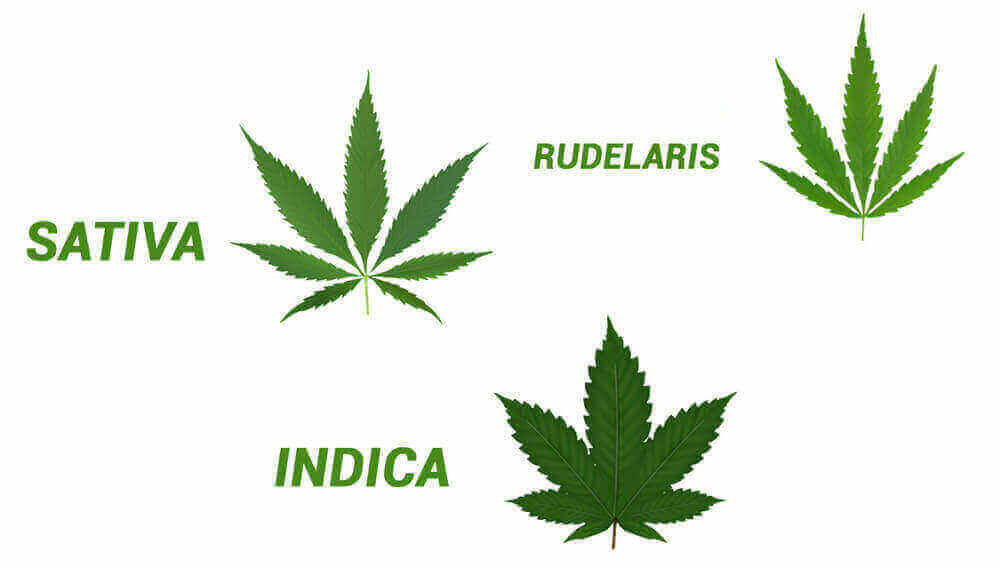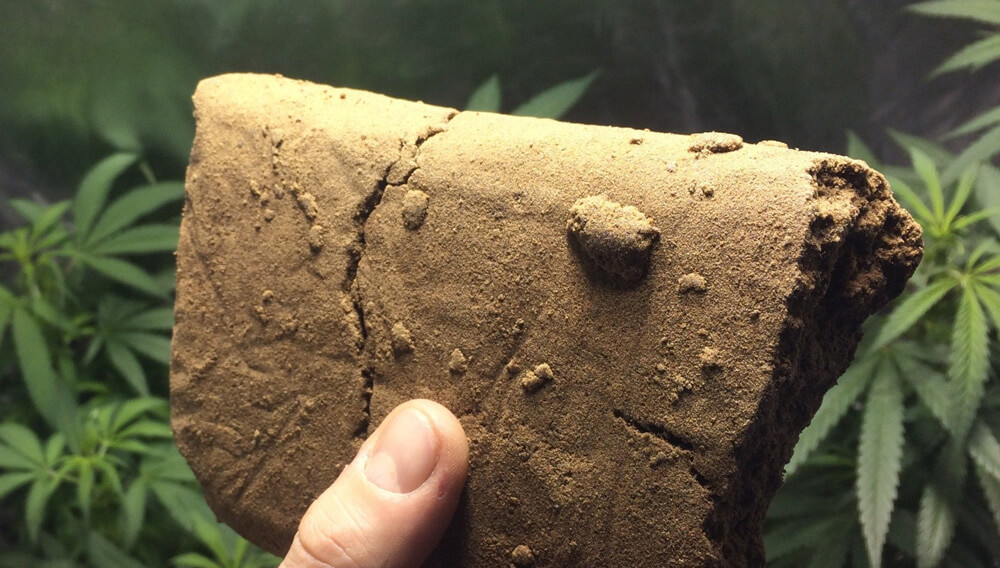We’re going to talk about the usage of marijuana leaves. Many questions around: when do I have to cut marijuana leaves? How are they structured? How many types? Where to be kept? Where and how to dry them? What to do with marijuana leaves? What if you smoke marijuana leaves? What do they contain? Why do marijuana leaves turn yellow? Why do they get folded down? Why do cannabis leaves fall down or get rolled up? How to provide smoking marijuana leaves? How to cook marijuana leaves?

marijuana leaves
Well, following up, simple and plain. In fact, once read, your view on marijuana leaves will have totally changed. You won’t throw away your marijuana leaves anymore and, if you do, you’ll be conscious on their multiple options you didn’t know.
Generally, the leave’s a vegetative organ which appears in vascular plants, and its main function’s photosynthesis. Apart from typical leaves or nomofiles, plants also produce other types of leaves with different forms and functions, like profiles, bracteas and antofiles. But, what about marijuana leaves?
Firstly, marijuana leave is cannabis symbol. Although growers tend to look for their buds and ignore what marijuana leaves can offer, these were, are and will be the most recognizable and representative marijuana visual symbol. When thinking about marijuana, we visualize that famous silhouette, drawn and represented worldwide. Marijuana leave’s the universal symbol of this plant, and, following up, we’re going to explain everything about this famous, although unknown, leave.
Structure, parts and shape of marijuana leaves
Concerning its structure and parts, marijuana leave is quiet similar to the rest of vegetal leaves. Firstly, we are going to define every part of the structure of marijuana leave and, then, describe how they are assembled to each other, that is, how the structure of the leave is assembled.
Parts of marijuana leaves

parts
Generally, every marijuana leave has the following parts:
- Pod: tender and long covering, in which certain plant seeds are in-line enclosed (not with marijuana), formed by two pieces or valves.
- Petiole: appendix of the leave of a plant through which it’s used to the stem.
- Raquis: axis of a spike or feather from which limbos and leaflet appear.
- Limbo: wide part of plant leaves.
- Leaflet or nerve: every separated piece into which a leave limbo’s occasionally divided.
- Vascular system: it’s formed by all the veins along leafy limbo, by means of major or minor venation.
- Underside: lower leave face, opposite to beam.
- Beam: upper face or adaxial face of the limbo of a plant leaf. Differently to underside, it doesn’t tend to have any stomas; it has a slightly gross cuticle, and less trichomes. Its color tends to be darker than underside color.
What’s its structure?
First of all, pod comes from the main stem or primary raquis of the plant, the first part of the structure of the leave. Petiole comes from pod, the appendix which joins the leaf with the pod and, this way, with the plant stem. Raquis is opposite to petiole, axis from which leaflets are born.
Leaflet separates the limbo from the leave, that is, the limbo axis. When the leave’s simple, leafy limbo’s formed by a single leaflet, so a leaflet’s similar to a leave. Leaflets form several coverings, and they finish in the root. Lastly, vascular system’s like a vein, along the leafy limbo. All these parts compose the leafy morphology of marijuana plants.
Besides, marijuana leaves are decused, that is, a couple of opposite leaves grow perpendicularly to the previous pair, forming crosses from top to bottom. Sometimes, when the plants grow and evolve, almost flourishing, the morphological pattern of the leaves can change; for instance, revegetated plants change their pattern, and their leaves show an alternative philotaxy, so they change their disposition regarding the plant stem, settling one by one and forming a single plane.
How many marijuana leaves can we find?
Mainly, we can find three types, or subspecies, of marijuana leaves, with different morphological characteristics: sativa, indica and ruderalis.

leaves types
You can have a look at the following article:
Sativa:
long leave, narrow, light, with pointed and irregular edges, usually green. The biggest plant leaves, mainly sativa, have more than thirteen leaflets.
Índica:
wide leaves, bigger, with about nine leaflets, strong olive green.
Ruderalis:
not a real species, similar to a subspecies; very small, abundant leaves, because it’s a subspecies which depends on climatic outdoor patterns. It appeared in Russia, so arid and cold weather made its morphology. Besides, it’s much more resistant to bad weather; the trunk’s robust and fluffy, and the foliage’s wide and light green.
Marijuana leave morphology
Marijuana leave morphology’s very varied, depending on different genetic mutations.
Types of cannabis mutations
Whorly phyllotaxy: mutation producing three leaves from each node, instead of two. Besides, an additional branch’s generated in every node, so the plant keeps on growing like a bush.
Ducksfoot: mutation producing palm-shaped wide leaves; they look like a duck foot membrane, that is, they lose the characteristic look of a marijuana leave.
Australian Bastard Cannabis (abc):
Rare mutation, producing an odd marijuana leave. The leaves haven’t any jagged edges because they’re plain, and the leaflets are about five centimeters long. Besides, this mutation doesn’t only affect the leaves, but it changes the general structure of the plant, which stops evolving like a straight bush, and starts evolving like grass.
Buds in the leaves:
Usually, the buds appear in the nodes, where petioles are born; but there’s a rare genetic mutation which makes buds appear in the other extreme of the petiole, that is, in the very leave base.
Viny cannabis:
This mutation makes the stems roll spirally, like a climber. Besides, the leaves are very different, losing the jagged shape, with fewer leaflets, smaller and rolly.
Albinism and variegation:
This mutation produces albino plants. Chlorophyll genes perform wrongly, provoking plant pigmentation wrong patterns. Then, unpigmented leaves appear, turning from green to light yellow, almost white. This is a negative mutation, because plants need chlorophyll for photosynthesis, so they need photosynthesis to survive and perform their vital processes.
What to do with marijuana leaves?
As previously mentioned, marijuana’s extremely useful. Not everybody knows marijuana leaves have a high THC percentage, with domestic, cosmetic and therapeutic usage; for any following usage, you should use manicure traces (trichome leaves closest to the buds) better than the rest of plant leaves – no resin, no proper psychoactive effect.
First of all, we have to dry the marijuana leaves, and, then, you will get surprised about their possibilities.
Where and how to dry marijuana leaves
Drying marijuana leaves is simple; you just have to hang them upside down in a dry, dark place. After a few days or weeks, depending on room humidity, the leaves will be ready to be shredded up and used. Besides, when dry and shredded, they’ll also be ready to be smoked or kept and stored in some dry dark place. A dry place’s very important, because humidity makes the leaves full of mold and fungi.
Different usage of marijuana
Following up, we can talk about different usage on the exceeding leaves of our crop.
– Resin and hash
First of all, let’s focus on the systems of resin extraction from the leaves – different extraction processes/methods/qualities are totally related to resulting product (the types of resulting hash are varied too).
Usually, the consumed hash will be dry sieved, the most common method among producers. Additionally, it can be extracted hand-rubbing, or through some modern techniques like resin separation by butane gas. This is the most popular technique, obtaining the most powerful THC percentage, almost 90%, when 15-40% is average. This technique requires the leaves close to the buds, the most impregnated by resin and trichomes; otherwise, the extraction with leaves will be impossible.
Moreover, extraction with ice and water consists of leaving the leaves or buds in water, so vegetal material stays surfacing while the trichomes go to the bottom, allowing us to produce our hash.
-Cooking with marijuana leaves.
Many recipes can be made with leftover crop leaves – with dry leaves, we can cook muffins, infusions, brownies, cookies or butter; our blog provides several post with the necessary steps and ingredients for these recipes:
-Infusions
Marijuana leaves contain THC, with similar, although minor, effects to bud THC. Consuming marijuana leaves produces a soft effect, so it’s ideal for infusions, salads and milk. It makes us relaxed, and it can help us with insomnia and appetite problems; besides, it provides medical effects, daily alleviation for chronic pain.
– Marijuana cosmetics.
The main marijuana-leave cosmetic product is oil. For that, we have to use a base of coconut oil and add the cannabis component to the final blend.
Very easy steps; firstly, you have to low heat the coconut oil in a pot for a few hours. Then, you have to add shredded marijuana leaves, approximately one part of marijuana every two oil parts.
Lastly, we have to wait till the solution chills up, filtering it, removing the rest of the leaves. Then, the solution can be used for therapeutic, aesthetic or relaxing purposes. One of the main aesthetic goals is dermatological cream, providing good results not only on skin, but also on hair, cuticles or lips.
As described along this post, marijuana leaves are very complex, providing multiple functions. Wasting marijuana leaves is nonsense. Plantae realm has provided a leave full of very interesting options; don’t allow the magnificent skills of the buds eclipse this wide range of possibilities, and go for it.





